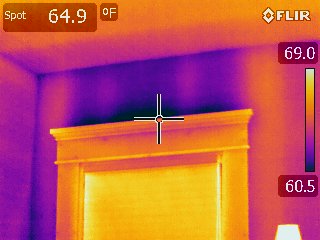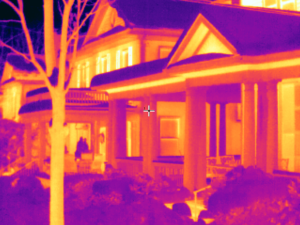 An infrared camera is a tool that can help identify water issues and air leakage in a building envelope. Specifically the device allows you to see radiation or temperature differential on a surface making it visible light. The camera image looks like it is glowing in areas that have a range of temperature.
An infrared camera is a tool that can help identify water issues and air leakage in a building envelope. Specifically the device allows you to see radiation or temperature differential on a surface making it visible light. The camera image looks like it is glowing in areas that have a range of temperature. 
I was able to test drive a Flir camera from Ivy Tools to perform an energy audit a couple of weeks ago. Using the camera and a blower door we were able to identify many locations of air leakage in the thermal envelope of the building. Sealing these leaks could cut energy usage by up to 30% for the homeowner. Some of the more advanced cameras allow for saving and viewing images.
For those hoping for a more technical definition: Thermal imaging cameras don’t actually see temperature. Instead, they capture the infrared (IR) energy transfer from an object to its environment and produce a real-time image in a color palette where hotter objects appear brighter and cooler objects appear darker. IR energy is generated by the vibration of atoms and molecules and behaves similarly to visible light where it can be reflected, refracted, absorbed and emitted. The more these atoms and molecules move, the higher the temperature of the object.




